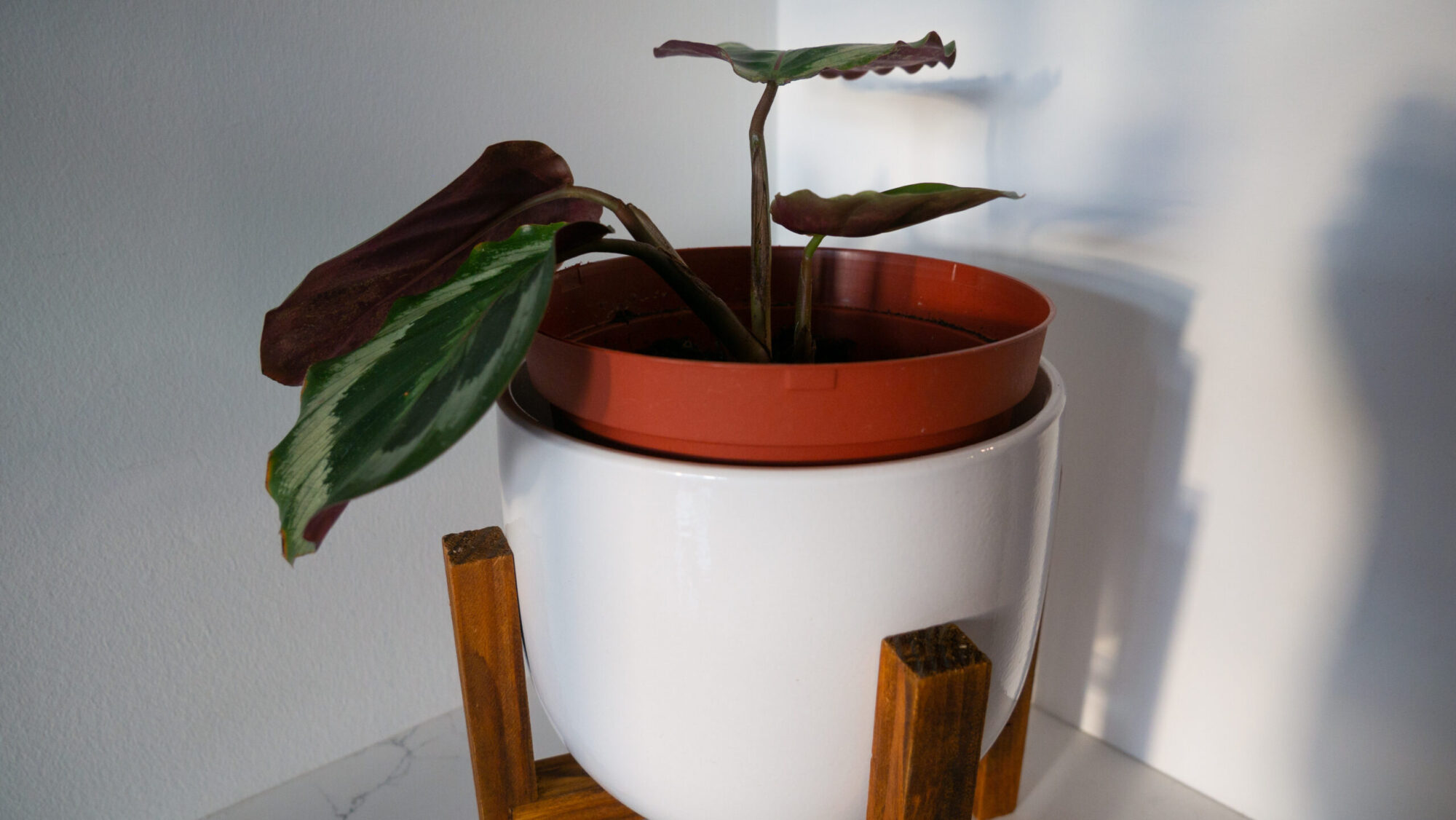I was gifted the beautiful Calathea Marion. I have had good times with her and sad times with her. I love her, but she sometimes doesn’t love me back. This is my plant log with my Calathea Marion.
Lighting
Calatheas like bright, indirect light. I originally put her about 15ft from a massive south-west facing window. She wasn’t into it. I moved her to the North East side of my apartment. She also wasn’t into that. I then moved her closer to the Southwest window, but in a shadier corner. She really didn’t like that. I eventually settled on a table in the middle of the initial room, behind my monstera. She likes this spot.
Transplant Shock
When I first got my Calathea, she had a lot of roots growing out of the bottom. I let her acclimatize for a while, but felt she needed to be repotted. I repotted her into a larger pot and wasn’t sure how she would do as I heard Calatheas are prone to transplant shock. She was initially sad. Her leaves weren’t going up and down in the way prayer plants do and I was concerned. I left her alone for a bit and eventually she settled and gave me new growth.
Crispy Leaves
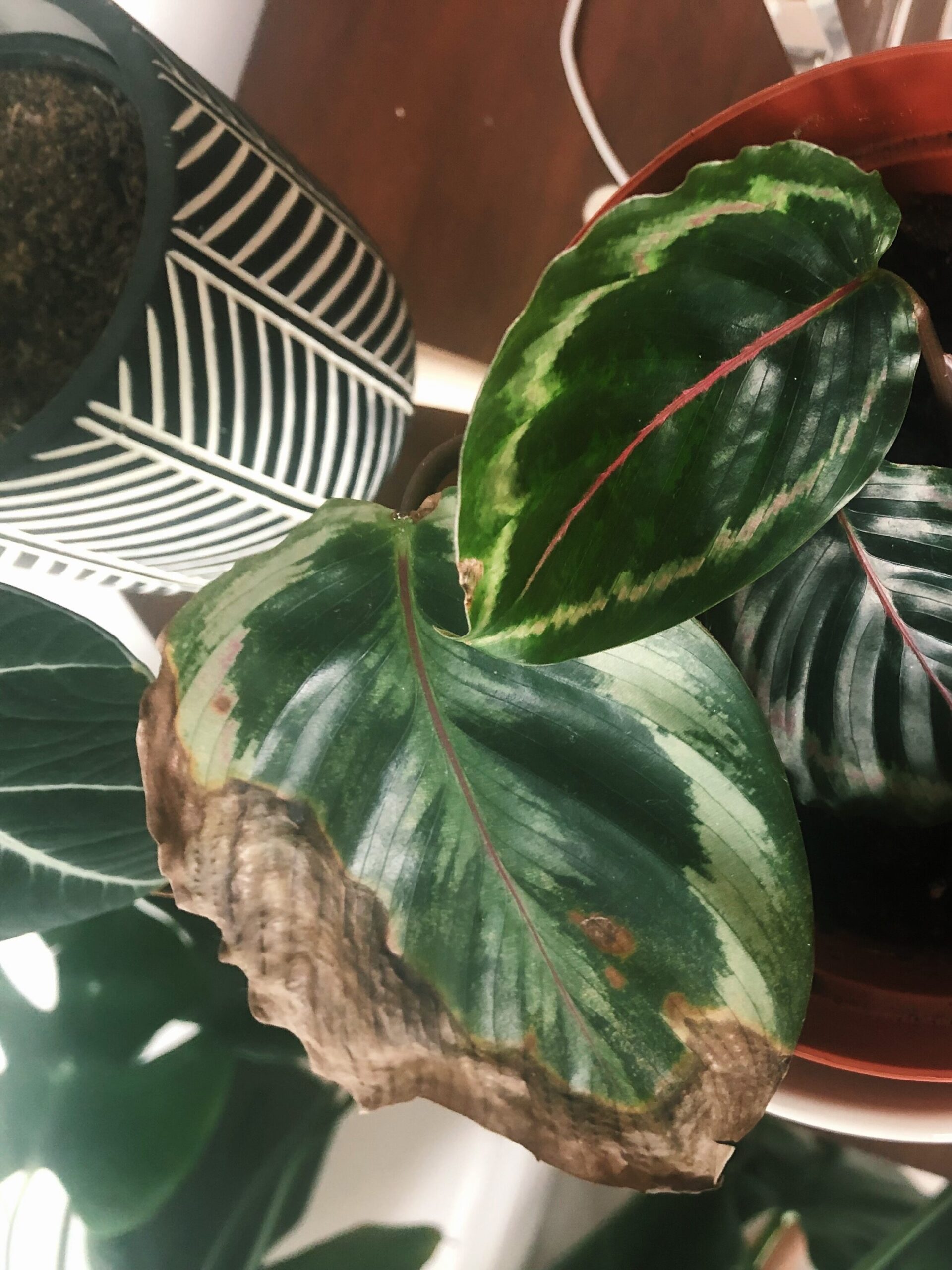
I have a humidifier with a digital reader so I knew humidity was not why my Calathea had crispy leaves. I thought maybe the sun was scorching her or maybe the soil wasn’t moist enough. These also were not my calathea’s troubles. I read the minerals of tap water cold be an issue so I switched to filtered water. Filtered water solved this problem with my Spider Plant so I thought this would be okay, but my filtered water is too harsh too. I started collecting rain water and tried this. My Calathea was soooo happy after I made this switch.
Fast forward 10 months. I decide I should try and shower my calathea with my sink tap to dislodge any pests (Calatheas are very prone to pests). This seemed fine the first couple times, but eventually I noticed the leaves crisping again. This shower method is not going to be a thing for this plant. I will have to go back to my spraying of the leaves.
Reverting to Juvenile Leaves
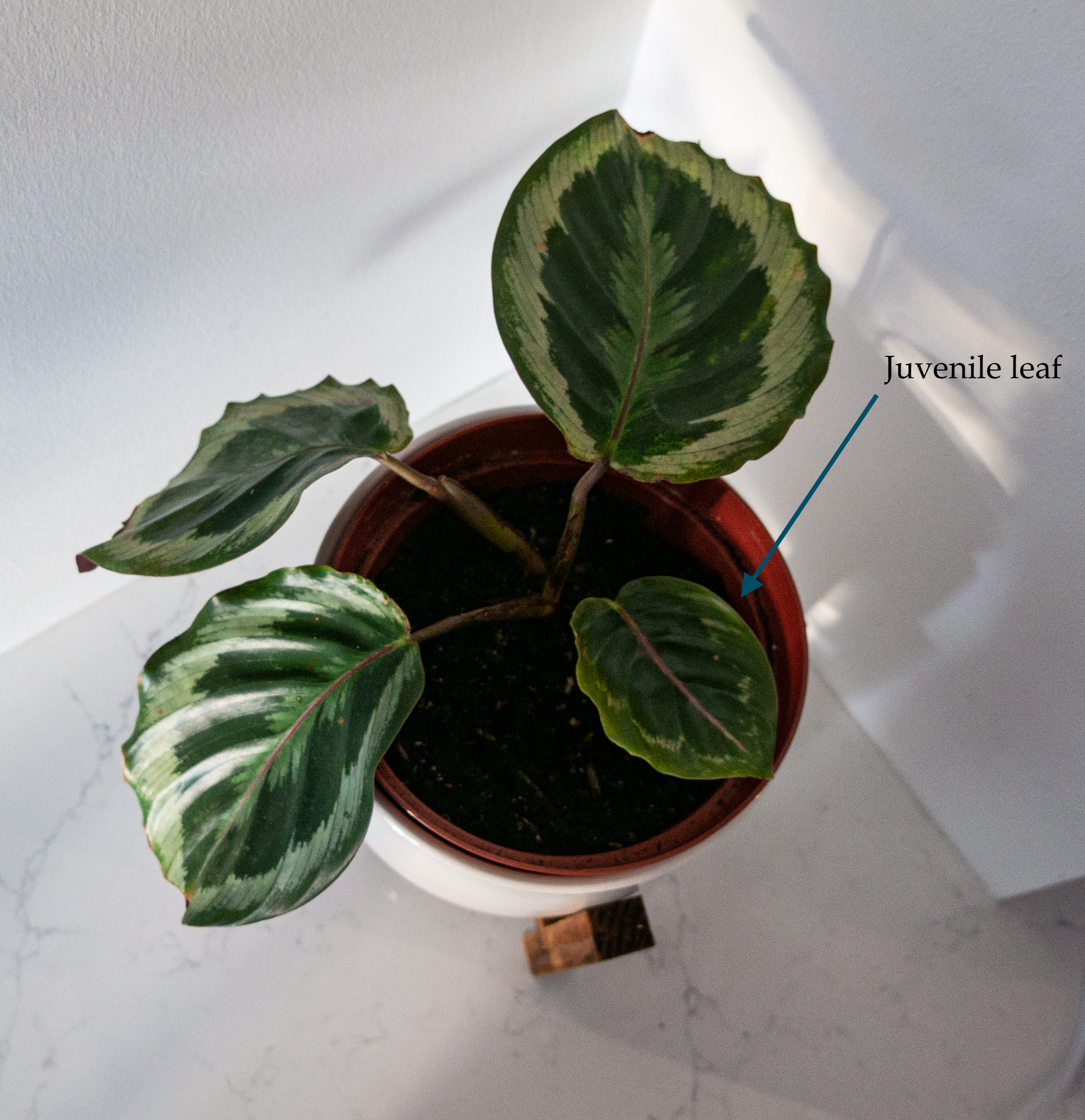
I somehow traumatized this plant so much it shed all of its original leaves and its leaves started to grow in juvenile form. Honestly, it has been happy in this stage (aside from my tap water trauma mentioned above, and pests). I trust in my plant and try to let her tell me what she needs, and I guess she needed to go back to juvenile, and that’s okay.
Pests & Splotchy Leaves
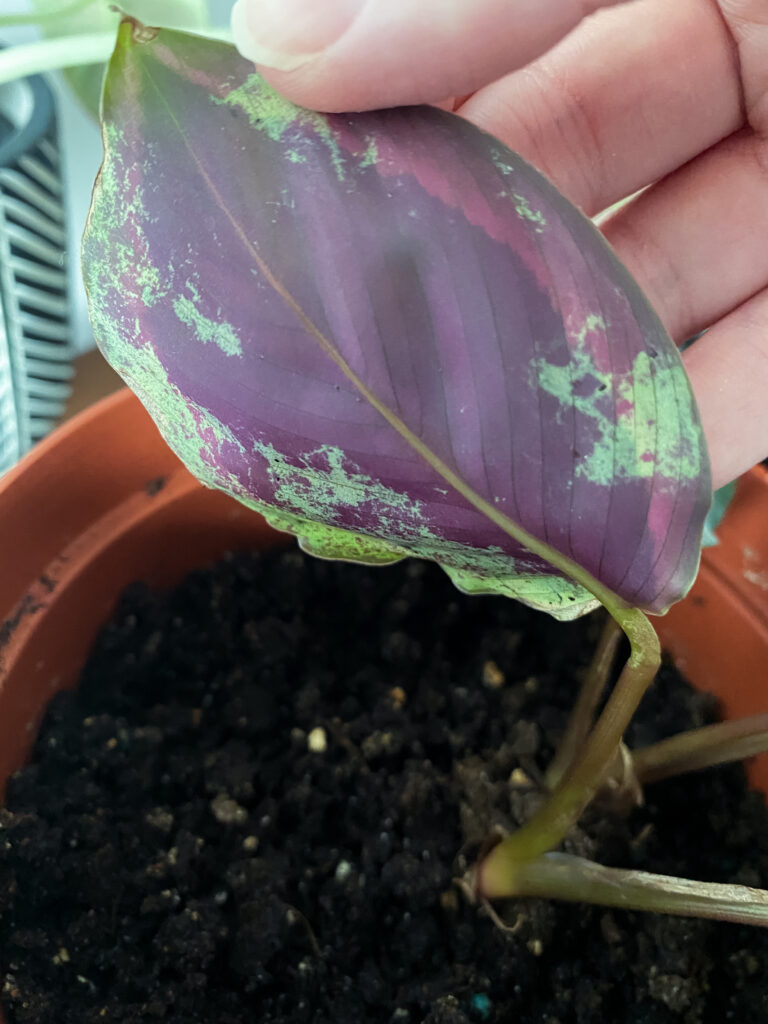
This was the weirdest thing and I could not find anything online. In the photos you can see the underside of the leaves of my Calathea are all splotchy and not the beautiful purple everyone loves. The likely culprits have been spider mites and thrips. I have battled both of them and they have made my calathea sad.
Spider Mites: they are small, clear, almost white, and look like tiny spiders. Spider mites resemble dust, which makes them difficult to recognize. You might notice a bit of webbing too.
Thrips: they are also small, but they resemble dirt. They suck the life out of your leaf.
My experience with both of these pests was that they sucked the life out of the leaf and lead to splotchy leaves. I dealt with them by spraying the plant with a mixture of neem oil, water, and natural soap until the problem went away. I also sometimes do this preventatively. I also found wiping down leaves can help mitigate some of the camouflage of these pests.
Summary of my lessons
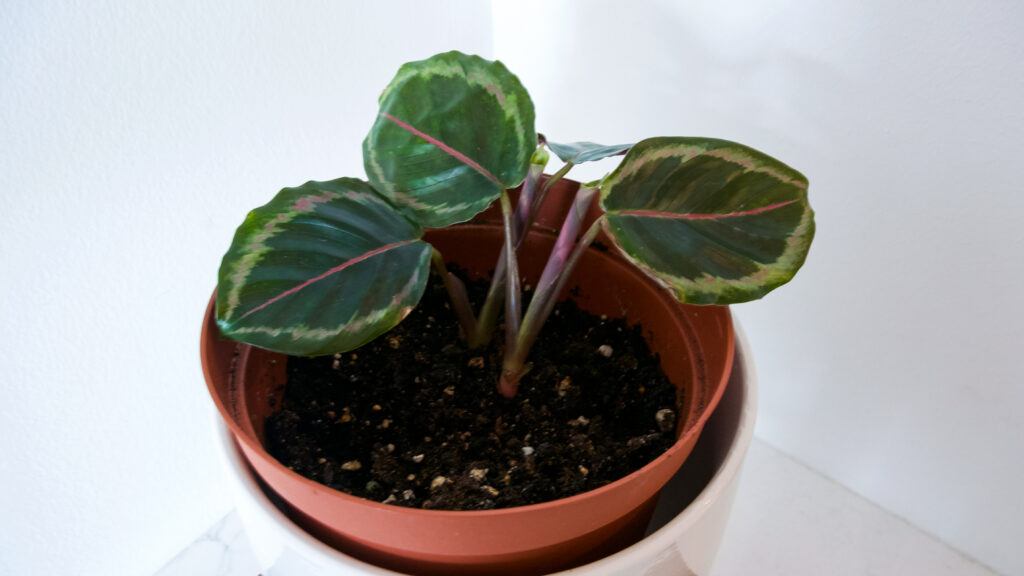
- Only water with rain water (or melted snow that is room temperature in the winter).
- Don’t shower with tap water. She hates it. Your water has too many minerals.
- Neem oil is your friend. Keep using your homemade pesticide to prevent pests.
- If her leaves keep moving up and down, she is probably happy with you.
- She needs moist soil always, but don’t overwater her.
- She may try your patience, but she’s worth it.
